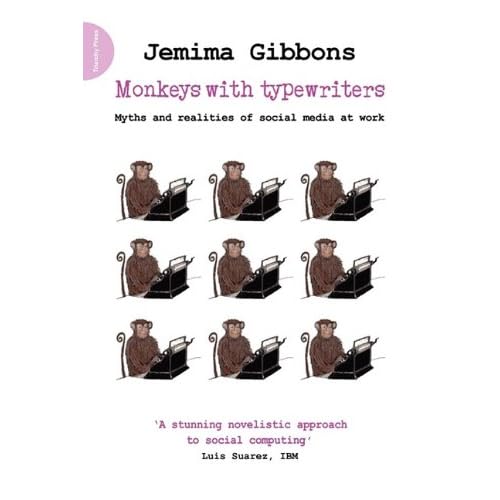 There's a rule about new technologies - bleeding edge tech doesn't equal bleeding edge demand. I'm old enough to remember Betamax.
There's a rule about new technologies - bleeding edge tech doesn't equal bleeding edge demand. I'm old enough to remember Betamax.
Electronics companies have a track record in this kind of failure. Famously (and quoted in Blue Ocean Strategy) Phillips CD-i was a commercial flop because it tried to do too many things - and customers weren't sure what value it could add to their lives.
That and the fact the games were rubbish.
Phillips added and added technical functions and spec. With all this 'special stuff' - the execs were convinced the market would lap it up. But they forgot to ask what the user would find useful.
Innovation is only any good if it's useful to people. The more people it is useful to, the better the outcome.
Often the focus of innovation is on ourselves - how can we make things better for us. Or it's on showing off how technically clever we are (our spec's bigger than your spec).
And isn't that what a huge chunk of digital marketing has been all about? Sharper and sharper focus on tracking and responding to online behaviour - cleverer and cleverer tech, more and more spec?
All the better to serve the right ad at the right time with.
All the innovation focused on building a better advert.
What we're talking about here is a technological arms race in pursuit of incremental improvements in quality or relevance of messages.
Which is the answer you'd come up with if you asked advertising and marketing teams what they wanted from digital innovation.
But is it what all elements of the route to market actually WANT from the best-ever ability to connect with people that digital technologies enable?
Is a better advert what the manufacturers and service providers want from digital technology? Is it the best they can expect from our growing ability to form communities of purpose at the drop of a hat?
And is a better advert what 'consumers' want?
Oh, I know, the right information at the right time becomes really 'useful' so you could argue the more effective you are at this the more effective your 'adverts' for all parties. There is some truth in this. Ads that take this approach attain much higher click-thru rates (but all those that don't get clicked must still be counted as spam).
More importantly, this is defaulting to the belief that what we all want is better messaging.
What if that isn't true? What if what we all actually want (manufacturers and service providers -
customers, too) is improvement in quality or relevance of products and services?
More potential 'customers' for advertising would find that useful.
So the role of advertising and marketing may just be in deploying your skills and relationships to improve the quality and relevance of products and services.
How do you innovate that using digital tools? Well that's pretty much what I'll be talking about at OMEXPO in Madrid tomorrow.
Expect references to the best set of tools to bring us together (the social technologies which form the web) being wasted on gathering eyeballs - and how platform thinking can put them to their best use: innovating better and more relevant products and services.
See you there (slides will follow :-)

![Reblog this post [with Zemanta]](http://img.zemanta.com/reblog_e.png?x-id=db5fcefe-1fb9-4521-981e-d45d6c7a8a3b)

![Reblog this post [with Zemanta]](http://img.zemanta.com/reblog_e.png?x-id=5ac6f368-7ab2-4a5e-bbcb-bcc7abd44bac)

![Reblog this post [with Zemanta]](http://img.zemanta.com/reblog_e.png?x-id=ee367440-3707-46c3-8c17-c0f99e620315)

![Reblog this post [with Zemanta]](http://img.zemanta.com/reblog_e.png?x-id=1ed21a63-5b63-40f5-a03d-a8e44384797c)


![Reblog this post [with Zemanta]](http://img.zemanta.com/reblog_e.png?x-id=6e8e9e0c-e981-4f1d-baef-5157fcdf4ac7)

![Reblog this post [with Zemanta]](http://img.zemanta.com/reblog_e.png?x-id=18ec4d71-0ed3-4d45-823b-0344a67ce7d1)


![Reblog this post [with Zemanta]](http://img.zemanta.com/reblog_e.png?x-id=f40771dc-40f5-426d-ab39-5131142693ae)

![Reblog this post [with Zemanta]](http://img.zemanta.com/reblog_e.png?x-id=1e4b90ce-41b3-4fc2-8f7b-927e2b94facc)

![Reblog this post [with Zemanta]](http://img.zemanta.com/reblog_e.png?x-id=f81060ec-e7d4-4d3a-84c6-69863b404a16)

![Reblog this post [with Zemanta]](http://img.zemanta.com/reblog_e.png?x-id=f9edf5c7-ec70-409c-8d28-3c6cdd78f8af)

![Reblog this post [with Zemanta]](http://img.zemanta.com/reblog_e.png?x-id=531c073c-8601-4d1e-b203-6168c868a994)

![Reblog this post [with Zemanta]](http://img.zemanta.com/reblog_e.png?x-id=cb9c72e4-a2c5-4e13-b25f-e9d0f9174126)